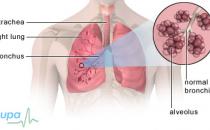Breast awareness
Published by Bupa's health information team, July 2009.
This factsheet is for women who would like information about being breast aware.
Breast awareness means knowing how your breasts look and feel, and knowing what changes to look out for.
About breast awareness
How to be breast aware
Five-point breast awareness code
Common breast changes
Breast changes to seek advice about
About breast awareness
Being breast aware means being familiar with how your breasts look and feel, and knowing how they change at different times of the month. Knowing what is normal for you will help you spot any changes if they happen.
Breast cancer is the most common type of cancer in women in the UK. It affects one in nine women at some time in their life. Being breast aware can help you find breast cancer early. This means that treatment can start earlier, which can increase your chance of survival.
Most breast lumps aren’t breast cancer – nine in 10 breast lumps are benign (not cancerous). But if you do have breast cancer, treatment is usually simpler and more successful if it's found early. Being breast aware can help you to you spot any unusual changes in your breasts as early as possible.
How to be breast aware
Breast awareness means getting into the habit of feeling and looking at your breasts from time-to-time so you know what’s normal for you.
There isn’t a formal set of instructions for checking your breasts. Check yourself in any way that's comfortable and convenient for you. For example:
- you may find it convenient to look at your breasts when you’re getting ready for a bath or shower, using a mirror to view your breasts from different angles
- you may find it helps if you have soapy hands when you feel your breasts, and want to check your breasts in the bath or shower
- you may find it more comfortable to check your breasts when you're lying down
Once you’re familiar with the usual feel and appearance of your breasts, you will notice if anything changes.
If you feel uncomfortable or anxious about checking your breasts, you may find it helpful to discuss your worries with your GP or a nurse.
Five-point breast awareness code
Follow the five-point breast awareness code.
- Know what’s normal for you.
- Check both the look and feel of your breasts.
- Know what changes to look and feel for.
- Report any changes to your GP straight away.
- Attend routine breast screening if you’re 50 or over.
Common breast changes
It's important to remember that each woman's breasts are different and that changes in how they look and feel aren’t always a cause for concern. Your breasts may be affected by the menstrual cycle, your age, pregnancy, the menopause and taking the contraceptive pill.
For example, if you haven’t been through the menopause it's normal to have lumpy, tender breasts just before your period, especially near your armpits. This happens when the milk-producing tissue in your breasts becomes active. Your breasts may feel soft after your period.
After the menopause, your breasts should feel softer and less lumpy as activity in the milk-producing tissue of your breasts stops.
If you have had a hysterectomy, your breasts may still feel tender or lumpy each month, even though your periods have stopped. This is because your ovaries are still working and producing hormones. You may notice monthly changes in your breasts until the time when your periods would have stopped naturally (the menopause).
Breast changes to seek advice about
You should see your GP if you notice any changes that aren’t normal for you. Look out for:
- a change in the size or shape of your breasts (after you have been through puberty), for example one breast becoming larger or lower
- skin changes such as puckering or dimpling (eg your skin feels like the texture of orange peel)
- a rash or crusting on your nipple or the surrounding area
- nipple changes, such as a change in the position of your nipple, or a newly inverted (turned-in) nipple
- discharge from one or both nipples (unless you’re breastfeeding and it's milky discharge)
- a change in feeling, especially if it's only in one breast
- pain in part of your breast or armpit
- swelling, thickening or a lump in your breast or armpit
This section contains answers to common questions about this topic. Questions have been suggested by health professionals, website feedback and requests via email.
Will changing my diet reduce my risk of getting breast cancer?
I’ve heard that men can get breast cancer too. Is this true?
I am breastfeeding and have noticed some changes in my breasts. Should I be worried?
Can changing my diet reduce my risk of getting breast cancer?
Answer
Much more research needs to be done before we can fully understand how your diet affects your risk of getting breast cancer. But we know that eating a healthy balanced diet, and living a healthy lifestyle, can help to reduce your risk of many diseases including heart disease, diabetes and some other types of cancer.
Explanation
Living a healthy lifestyle will help you to stay in good health and reduce your risk of some diseases, including heart disease and diabetes.
It’s important that you eat a healthy balanced diet, including plenty of fruit and vegetables. Try to eat at least five portions of fruit and vegetables every day. Regular exercise will also help you to stay healthy.
If you smoke, the most important thing you can do for your health is to quit. If you’re having trouble giving up, contact your GP for advice.
Further information
Breakthrough Breast Cancer
0808 0100 200
www.breakthrough.org.uk
Sources
- Reducing your risk. Breakthrough Breast Cancer. www.breakthrough.org.uk, accessed 8 May 2009
- 5 a day. Department of Health. www.dh.gov.uk, accessed 08 May 2009
I’ve heard that men can get breast cancer too. Is this true?
Answer
Yes, men can get breast cancer too, but it’s very rare. Around 300 men are affected by breast cancer each year in the UK.
Explanation
It’s very rare for men to get breast cancer. Because of this, not everyone is aware that it can affect men too. Breast cancer can occur in men of any age.
The most common symptom of breast cancer in men is a lump in their breast tissue. Most of the breast tissue in men is found behind their nipple. If you find a lump in this area, contact your GP.
Most lumps aren’t breast cancer. They are usually caused by a condition called gynaecomastia, which means ‘female breast’. Gynaecomastia causes an increase in breast tissue in men, usually in the form of a lump under your nipple. Gynaecomastia can usually be treated with medicines.
Male breast cancer is usually treated with an operation called a mastectomy. This means that all of your breast tissue, your nipple and your lymph nodes will be removed.
Further information
Breakthrough Breast Cancer
0808 0100 200
www.breakthrough.org.uk
Sources
- Male breast cancer. Breakthrough Breast Cancer. www.breakthrough.org.uk, accessed 08 May 2009
- Male breast cancer, Signs and symptoms. Breakthrough Breast Cancer. www.breakthrough.org.uk, accessed 08 May 2009
- Gynaecomastia. Breakthrough Breast Cancer. www.breakthrough.org.uk, accessed 08 May 2009
- Male breast cancer, Treatment. Breakthrough Breast Cancer. www.breakthrough.org.uk, accessed 08 May 2009
I’m breastfeeding and have noticed some changes in my breasts. Should I be worried?
Answer
If you’re breastfeeding and notice some unusual changes in your breasts, contact your GP. It’s common for your breasts to feel lumpy while you’re breastfeeding, but it’s best to get anything unusual checked, just to be on the safe side.
Explanation
Examine your breasts for any unusual changes while you’re breastfeeding, as you would normally. It’s common to get lumpy breasts while you’re breastfeeding. But if you’re concerned, or notice any unusual changes in you breasts, contact your GP.
You can get breast cancer during or after breastfeeding, so it’s important that you continue to be aware of any changes in your breasts.
Further information
Breakthrough Breast Cancer
0808 0100 200
www.breakthrough.org.uk
Sources
- Breastfeeding. Breakthrough Breast Cancer. www.breakthrough.org.uk, accessed 08 May 2009
- How is breastfeeding related to cancer? Cancer Research UK. www.cancerhelp.org.uk, accessed 08 May 2009
Related topics
Benign breast lumps
Breast cancer
Mastectomy (breast removal)
This information was published by Bupa’s health information team and is based on reputable sources of medical evidence. It has been peer reviewed by Bupa doctors. The content is intended for general information only and does not replace the need for personal advice from a qualified health professional.
Publication date: July 2009.
Breast awareness factsheet
Visit the breast awareness health factsheet for more information.
Further information
Cancer Research UK
0808 800 4040
www.cancerresearchuk.org
Breast Cancer Care
020 7384 2984
www.breastcancercare.org.uk
Breakthrough Breast Cancer
0808 0100 200
www.breakthrough.org.uk
Related topics
Benign breast lumps
Breast cancer
Mammography if you have breast symptoms
Mammography if you have no breast symptoms
Mastectomy (breast removal)
Sources
- Breast cancer at a glance. Cancer Research UK. http://info.cancerresearchuk.org, accessed 15 April 2009
- Breast cancer symptoms. Cancer Research UK. www.cancerhelp.org.uk, accessed 15 April 2009
- Be breast aware. NHS breast cancer screening programmes. www.cancerscreening.nhs.uk, accessed 15 April 2009
- Breast awareness. Breast Cancer Care. www.breastcancercare.org.uk, accessed 15 April 2009
- Breast awareness. Breakthrough Breast Cancer. www.breakthrough.org.uk, accessed 15 April 2009
This information was published by Bupa’s health information team and is based on reputable sources of medical evidence. It has been peer reviewed by Bupa doctors. The content is intended for general information only and does not replace the need for personal advice from a qualified health professional.
Publication date: July 2009.
















